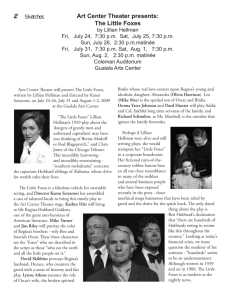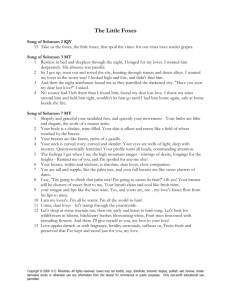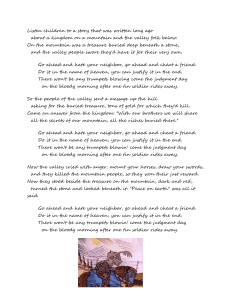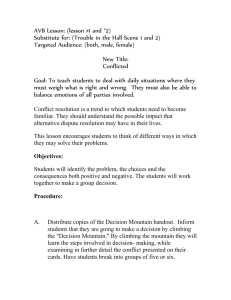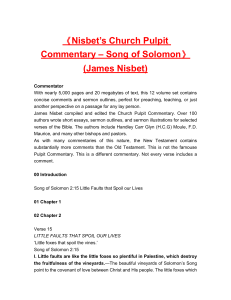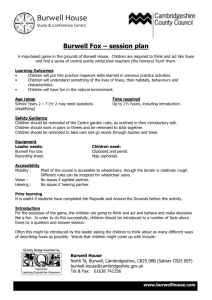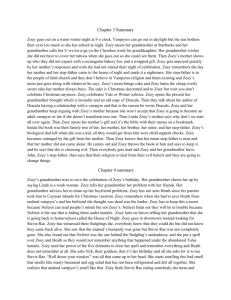Honors Analysis Section 7.5: Modeling Trigonometric Functions
advertisement
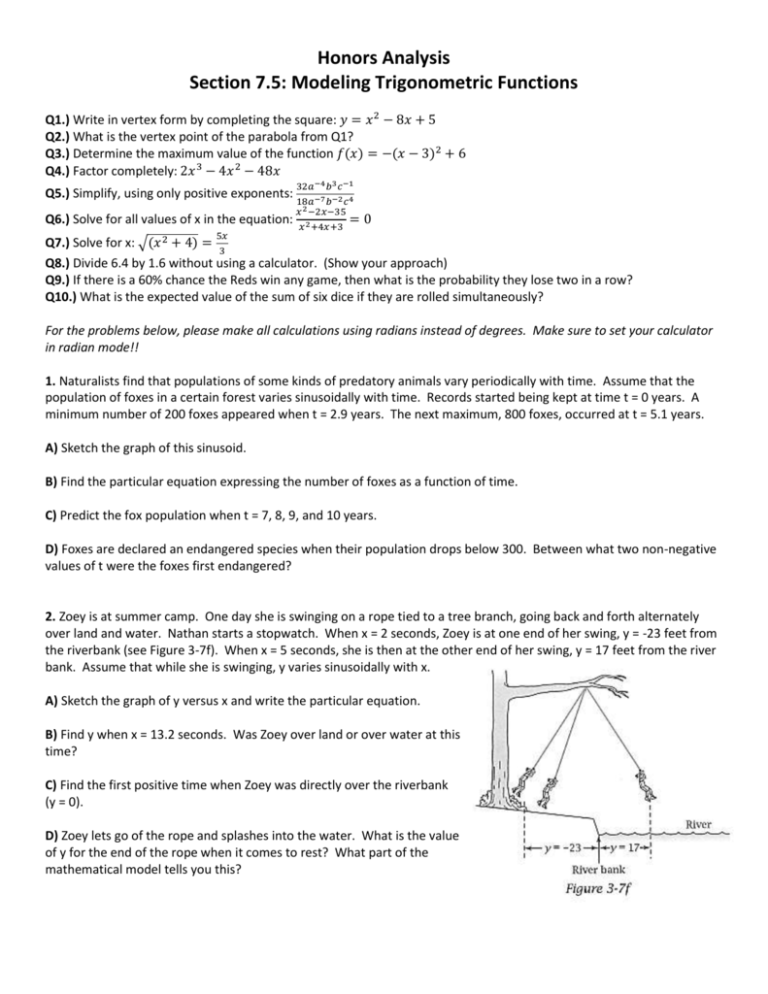
Honors Analysis Section 7.5: Modeling Trigonometric Functions Q1.) Write in vertex form by completing the square: 𝑦 = 𝑥 2 − 8𝑥 + 5 Q2.) What is the vertex point of the parabola from Q1? Q3.) Determine the maximum value of the function 𝑓(𝑥) = −(𝑥 − 3)2 + 6 Q4.) Factor completely: 2𝑥 3 − 4𝑥 2 − 48𝑥 Q5.) Simplify, using only positive exponents: Q6.) Solve for all values of x in the equation: 5𝑥 3 32𝑎−4 𝑏3 𝑐 −1 18𝑎−7 𝑏−2 𝑐 4 𝑥 2 −2𝑥−35 = 𝑥 2 +4𝑥+3 0 Q7.) Solve for x: √(𝑥 2 + 4) = Q8.) Divide 6.4 by 1.6 without using a calculator. (Show your approach) Q9.) If there is a 60% chance the Reds win any game, then what is the probability they lose two in a row? Q10.) What is the expected value of the sum of six dice if they are rolled simultaneously? For the problems below, please make all calculations using radians instead of degrees. Make sure to set your calculator in radian mode!! 1. Naturalists find that populations of some kinds of predatory animals vary periodically with time. Assume that the population of foxes in a certain forest varies sinusoidally with time. Records started being kept at time t = 0 years. A minimum number of 200 foxes appeared when t = 2.9 years. The next maximum, 800 foxes, occurred at t = 5.1 years. A) Sketch the graph of this sinusoid. B) Find the particular equation expressing the number of foxes as a function of time. C) Predict the fox population when t = 7, 8, 9, and 10 years. D) Foxes are declared an endangered species when their population drops below 300. Between what two non-negative values of t were the foxes first endangered? 2. Zoey is at summer camp. One day she is swinging on a rope tied to a tree branch, going back and forth alternately over land and water. Nathan starts a stopwatch. When x = 2 seconds, Zoey is at one end of her swing, y = -23 feet from the riverbank (see Figure 3-7f). When x = 5 seconds, she is then at the other end of her swing, y = 17 feet from the river bank. Assume that while she is swinging, y varies sinusoidally with x. A) Sketch the graph of y versus x and write the particular equation. B) Find y when x = 13.2 seconds. Was Zoey over land or over water at this time? C) Find the first positive time when Zoey was directly over the riverbank (y = 0). D) Zoey lets go of the rope and splashes into the water. What is the value of y for the end of the rope when it comes to rest? What part of the mathematical model tells you this? 3. A theme park is building a portion of a roller coaster track in the shape of a sinusoid (Figure 3-7g). You have been hired to calculate the lengths of the vertical and horizontal support beams to use. A) The high and low points of the track are separated by 50 m horizontally and 30 m vertically. The low point is 3 m below the ground. Let y be the distance (in meters) a point on the track is above the ground. Let x be the horizontal distance (in meters) a point on the track is from the high point. Find a particular equation for y as a function of x. B) The vertical support beams are spaced 2 m apart, starting at the high point and ending just before the track goes below ground. Make a table of values of the lengths of the first 5 beams (starting at x = 0). C) The horizontal support beams are spaced 2 m apart, starting at ground level and ending just below the high point. Make a table of values of the first five horizontal beam lengths (starting where y = 0). 4. Pirates have buried a treasure in the side of a mountain. The mountain range has a sinusoidal vertical cross section (Figure 3-7h). The valley to the left is filled with water to a depth of 50 m, and the top of the mountain is 150 m above the water level. You superimpose the mountain diagram onto a coordinate plane with the x-axis at water level and the y-axis 200 m to the right of the deepest part of the water. The top of the mountain is located at x = 400 m. A) Find a particular solution expressing y for points on the surface of the mountain as a function of x. B) Show algebraically that the sinusoid in part A contains the origin, (0,0). C) The treasure is located beneath the surface at the point (130, 40), as shown in Figure 3-7h. Which would be a shorter way to dig to the treasure – a horizontal tunnel or a vertical tunnel? Show your work. 5. Suppose that you are on the beach on August 2. At 2:00 p.m., at high tide, you find that the depth of the water at the end of a pier is 1.5 m. At 7:30 p.m., the depth of the water is 1.1 m deep. Assume that the depth varies sinusoidally with time. A) Find a particular equation for depth as a function of time that has elapsed since 12:00 midnight at the beginning of August 2. B) Use your mathematical model to predict the depth of the water at 5:00 p.m. on August 3. C) At what time does the first low tide occur on August 3? D) What is the earliest time on August 3 that the water will be 1.27 m deep? 6. 7. The hum you hear on some radios when they are not tuned to a station is a sound wave of 60 cycles per second. A) Is 60 cycles per second the period or frequency? If it is the period, find the frequency. If it is the frequency, find the period. B) The wavelength of a sound wave is defined as the distance the wave travels in a time equal to one period. If sound travels at 1100 ft/sec, find the wavelength of the 60 cycle-per-second hum. C) The lowest musical note the human ear can hear is about 16 cycles per second. In order to play such a note, an organ pipe must be exactly half as long as the wavelength. What length of organ pipe would be needed to generate a 16 cycle-per-second note? 8.) The typical voltage V supplied by an electrical outlet in the U.S. is a sinusoidal function that oscillates between 165 volts and +165 volts with a frequency of 60 cycles per second. Write an equation for the voltage as a function of time t.

